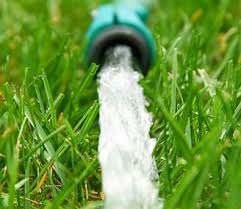May Landscaping Tips for St. Louis Lawns and Gardens
May Landscaping Tips
Now is the perfect time to install new shrubbery, perennials and ornamental trees. For smaller varieties that you will plant yourself, there are a few things to keep in mind. The first thing to think about is where to plant your tree. Some zoning and neighborhood associations have rules about the types of trees you can plant and where you can plant them, so consider those, and also any right-of-way or property lines.
Watch the space to see how much sun it gets. That’ll be important when you select your tree. We supply all of the necessary information and work with you to get your new plantings precisely where they need to be. Those at a garden center will have tags that specify things such as sun or shade requirements. They’ll also tell you the size of the mature tree so you know how far to plant from buildings, fences, landscaping or overhead wires. The tags also have info about the right growing zone for each tree.
It doesn’t matter of course if Environmental Landscaping has helped you install new trees, shrubs, perennials or any other plants, you want to see them not just survive but thrive.
Watering these plantings properly is the most important factor in getting your investment to pay off. When it comes to watering trees and other landscape plants there are a lot of misconceptions and assumptions that need to be cleared up. You’ve spent good money (and time if you planted them yourself) on these plants and you’re going to spend even more time and money (on your water bill) to keep them alive. If you don’t, you’ll be spending it replacing them when they die. 
Don’t rely (much) on mother nature. Rainfall can be very deceiving. You think the great 45 minutes of thunderstorm just watered your plants beautifully, but half of it ran off into the lawn because it rained so hard, and only the top couple of inches of the mulch is wet. Unless it rains a light, soaking rain for at least 4-5 hours, don’t even consider natural precipitation as “watering”.
Standing with a hose is not good enough most times either. It may work for tiny flowers with 2″-4″ of a root system, but if you think standing there with a hose for a few minutes on that new tree or shrub will matter, you’re not doing enough.
And don’t spend any time wetting the leaf tissue, either. Those little leaves might look thirsty to you, but most plants cannot absorb water by spraying them; it must be drawn in by the roots. Spraying the leaves can even promote fungal diseases by wetting the leaf tissue. Water at the base of plants so the roots can take in the water.
You can water anytime you want: Obviously, early morning and evening are better because less water evaporates from the scorching sun of summer, but if you can’t water then, do it another time. It’s better to do it period, than not to do it at all. Just make sure you are watering at the base of the plant. You can even water overnight.
You’re probably not going to water too much. We’ve only seen this on a couple instances over the past decade here. The overwhelming majority of property owners underestimate how much water their plants should receive on a weekly basis.
This is why your automatic sprinkler system should be de-winterized and ready for use by the middle of the month too, ready to go now so that plants new and old can develop and strengthen their root systems in preparation for the harsher conditions ahead.








